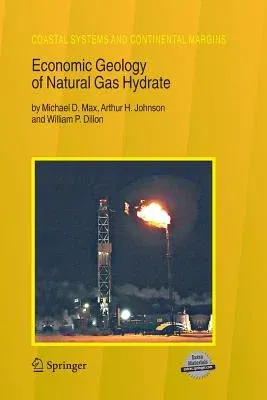Michael D Max
(Author)Economic Geology of Natural Gas Hydrate (2006)Paperback - 2006, 14 November 2014

Qty
1
Turbo
Ships in 2 - 3 days
In Stock
Free Delivery
Cash on Delivery
15 Days
Free Returns
Secure Checkout
Part of Series
Coastal Systems and Continental Margins
Print Length
343 pages
Language
English
Publisher
Springer
Date Published
14 Nov 2014
ISBN-10
9400788509
ISBN-13
9789400788503
Description
Product Details
Book Edition:
2006
Book Format:
Paperback
Country of Origin:
NL
Date Published:
14 November 2014
Dimensions:
23.39 x
15.6 x
1.93 cm
ISBN-10:
9400788509
ISBN-13:
9789400788503
Language:
English
Location:
Dordrecht
Pages:
343
Publisher:
Weight:
512.56 gm

